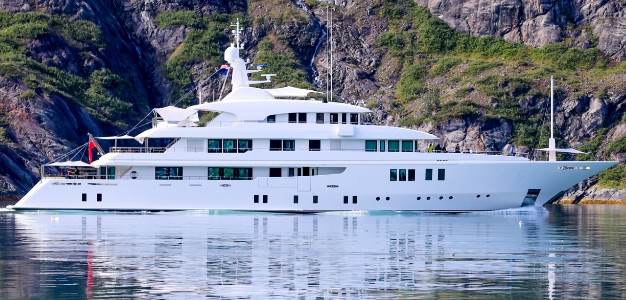
11 Jun 2024

Academy by Ephemeris is the all-in-one platform for superyacht training, maritime education, and career development. Our interactive career guides show you the exact courses, experience, and qualifications needed to advance in the industry.
Whether you’re just starting or looking to progress, we offer globally recognised superyacht training courses hosted by superyacht training providers across the globe, maritime e-learning courses, essential maritime learning tools and books to support your journey.
Easily find approved training providers, explore career pathways and connect with ENG 1 medical fitness doctors for revalidations. Plus, gain access to the Ephemeris Free CV Builder & E-Profile to stand out to future employers.
With over 10,000 yachts in operation, the demand for skilled crew is higher than ever. Academy by Ephemeris provides every educational resource you need to succeed in the dynamic world of yachting.
Maritime Training schools showcase in-person and live-stream courses, including costs, and schedules of these course availability.
Offers a catalogue of e-learning maritime courses available for purchase.
Provides a collection of useful and relevant maritime books for purchase.
Features useful and relevant maritime learning tools and aids available for purchase.
Showcases detailed maritime career paths that are animated and clearly outline what courses to do next to advance your career in your chosen department. The career guides help you understand the qualifications and experience needed for these next courses and career progression.
Lists ENG1 medical fitness doctors to help students easily find approved professionals so they can get their medical fitness certificate updated.
A personal profile to keep track of your purchased books tools e-learning courses, in person and live stream courses.
Free CV Builder and E Profile for Yacht Crew. Automatically build and update your CV as you gain new certifications and experience. Seamlessly integrate with the crew recruitment application, making you instantly available to vessels and crew agents.
Academy by Ephemeris provides the career paths for the Deck, Engineering, and Interior departments, helping you easily identify the department in which you want to advance your career. Select your department to see your career path.
The Bridge & Deck Department is the backbone of a vessel's safe operation. Charged with responsibilities that range from navigation and stability to equipment handling and hull maintenance, this department ensures that a vessel not only runs efficiently but also complies with the highest standards of safety and seamanship.

The Engineering Department is the heart of a yacht’s technical operation — a team dedicated to ensuring that all mechanical, electrical, and hydraulic systems function seamlessly, safely, and reliably. From engine performance and power generation to HVAC, watermakers, fuel systems, and waste treatment, the department is responsible for the silent systems that make luxury at sea possible.

The Interior Department is the soul of hospitality on board a yacht. Tasked with delivering an exceptional standard of comfort, cleanliness, and care, this team ensures that every moment of a guest’s experience feels effortless, elegant, and unforgettable. From the sparkle of the glassware to the smooth flow of a morning coffee service, the Interior team plays a vital, often invisible, role in making the yacht feel like a floating five-star hotel.

The Galley Department is the culinary heartbeat of a yacht — a place where artistry meets precision and every dish served is a reflection of the yacht’s commitment to excellence. Whether catering to the discerning palate of a private owner or delivering flawless five-star service to charter guests, the Galley team plays a central role in shaping the onboard experience.

Superyacht Career Guide Departments
Select your preferred department below to browse the various positions available and the
skills and characteristics best suited to each position.
Yacht Industry Averages
As superyachts get larger in length and more complex to operate, the demand for highly qualified crew is increasing year on year. Visit the Career Paths to continue your professional development and enhance your earning potential.
Superyacht Industry Updates
Stay up to date with the latest news from our team on training, certification, and career navigation in the Superyacht industry.
Go to News and Media
11 Jun 2024

11 Oct 2024